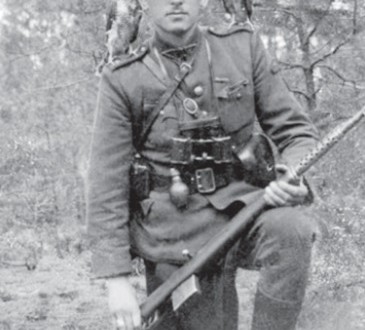By Alvydas (Al) Karasa
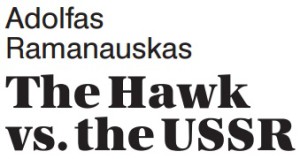
One of the last and best known commanders of Lithuanian armed resistance to Russian occupation was born in Connecticut
HE STORY OF LITHUANIA’S ARMED RESISTANCE to Russian occupation during and after World War Two is a long and tragic one More than 50,000 died in the fighting or suffered unimaginable torture at the hands of their captors before execution.
Armed resistance, meager at first, grew rapidly in response to the savagery of the Red Army and the NKVD—Narodnyi Kommissariat Vnutrennikh Del (Commissariat for Internal Affairs). In time, the Lithuanian Freedom Council, a political resistance organization, gave way to the Lithuanian Partisan Movement and armed resistance was organized to be more effective. This military organization was built on the model of independent Lithuania’s armed forces, including its laws and its documentation.
Partisan ranks were filled by farm boys whose families lost their homes and land to collectivization and by young men from colleges and universities, even high schools. Training was in haste and often under fire. But in a very short time, armed resistance became so well-organized that it fielded 30,000 troops in small formations all across the country and could nearly double that number on short notice by mobilizing the “reserves”—those living and working within the general population. This was possible because the civilian support base was strong and widespread.
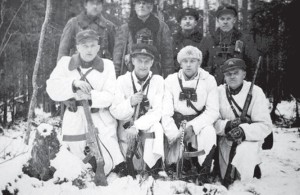
With radio, mail and telephone communication controlled by the enemy, messengers were used in its place to inform and supply fighting units in the field. This role was filled by women and girls of high school age. They supplied the partisans with food, relayed information between command posts and procured forged documents. The underground press was maintained without pause to inform the people, disrupt enemy political aims and unmask propaganda. Women were also part of the armed resistance because if their men—husbands, friends or relatives—were involved, their own lives were in danger whether they took part in it or not.
More than 23,000 suffered torture and execution in addition to an equal number lost in action, and thousands were deported to the Siberian wilderness for supporting the armed underground. This civilian collaboration was directly responsible for the longevity and effectiveness of Lithuania’s underground resistance. No other country under Soviet domination lasted as long with all its instruments of independence intact until the time was right to reclaim it.
When we consider the size (up to 70,000 antipartisan troops) and might of the enemy, it is astounding that armed resistance in Lithuania lasted nearly ten years. It was one of the longest guerilla wars of the twentieth century. Retaliatory measures by the Russians were marked by the most barbaric methods. Being arrested by the NKVD meant torture in basements of the large public buildings converted for that very purpose when they were claimed by the Red Army. The horrific methods of interrogation used there had not been seen since the Inquisition during the Middle Ages.
The mutilated bodies of prisoners murdered in this manner were dumped in public places. This was meant to serve as a deterrent to helping the resistance. A more sinister purpose of these displays was the arrest and interrogation of those who were emotionally affected by the sight, on the assumption that they knew the dead. Because all partisans operated under code names and carried no identification, they couldn’t be tied to friends or relatives.
If these tactics discouraged some, they had the opposite affect on many others. Partisan numbers grew. The country’s dense forests served as the necessary shelter for underground bunkers constructed to be undetectable. Lithuanian partisans believed strongly in their cause, but were under no illusions of driving the invaders out all by themselves. They lacked outside backing and the supply of arms, medicine, and equipment. Based on the Atlantic Charter signed by Churchill and Roosevelt, and after several further negotiations, they had expected aid from the West. But it never came. Support of the French Maquis by Britain paved the way to the success of D-Day, but similar support of Baltic partisans against Soviet oppression was politically incorrect. Russia was one of the Allies.
Adolfas Ramanauskas, the well liked and respected language and mathematics teacher from Lazdijai, joined the fight early. He was to become one of the last active commanders of armed resistance. He understood Russia’s aims to physically, morally, and spiritually destroy Lithuania, her independence, and her nationhood. His highly principled patriotism could not allow that to happen. He also understood that in order to maintain the nation’s fight to regain independence, political strength was an important factor. Much of his attention was directed in that area through countless publications to inform the population and expose enemy propaganda. Already committed to uprisings against the first Russian invasion in 1941, Ramanauskas officially joined the armed partisan forces during the second invasion in 1944.
He was a graduate of the Kaunas War College and already qualified for leadership. He rose through the ranks rapidly and was battalion commander within a year. Two years later, he was the Dainava district commander. After numerous successes in this post, he was promoted to supreme commander of the entire partisan organization of Southern Lithuania. Among his brothers-in-arms he was known for his friendliness, sincerity and total dedication to the fight for Lithuania’s freedom. His idealism reached everyone with whom he came in contact.
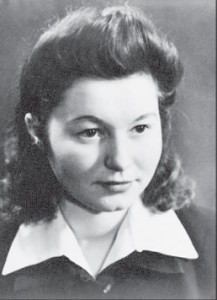
Born in 1918 in New Britain, Connecticut, which his parents had immigrated to earlier, Adolfas returned with them to Lithuania in 1921. After high school in Lazdijai, he attended the Klaipėda Pedagogical Institute. In 1939, he graduated from the Panevėžys Pedagogical Institute. Then, after gaining a junior officer’s rank from the Kaunas War College, he went on to pursue a career in education.
When the Red Army invaded his homeland a second time, he immediately took an active role in the fledgling resistance movement. Accompanied by his friend Antanas Kulikauskas, Ramanauskas presented himself to the partisan organization in the Nemunaitis region. Both arrived already armed and equipped for the field. In his memoir he says “…we didn’t want to arrive ‘naked’ and depend on the partisan command to supply us…”
Acceptance into partisan ranks was not a forgone conclusion of simply choosing to join. Security clearance and sponsorship was required to prevent infiltration by enemy agents. Ramanauskas was already qualified due to his part in the uprisings of 1941.
Taking the code name Vanagas (The Hawk), he was assigned to the Nemunaitis area squad and his armed underground work began. He was elected squad leader on his first day with the unit. As he took on more responsibilities, which led to his promotion in the ranks, he became aware of the need for better organization. He was instrumental in the consolidation of several similar groups, first into platoons and later company-sized units. By the time he took command of the aforementioned Dainava district, these units were battalion size.
He was personally involved in countless battles against the NKVD/KGB and Red Army troops. Respect for his leadership was universal among the men under his command. His reputation for setting an example in battle was well known. Appointment to command of all of southern Lithuania’s partisan forces and promotion to colonel was a natural progression. In 1950, he was appointed Commander-in-Chief of the defense forces of the Lithuanian Freedom Fighters Movement (LLKS—Lietuvos Laisvės Kovos Sàjūdis). This organization came to be recognized as the highest national authority during the years of foreign occupation.
It was hoped that, after the war ended, the West would recognize Lithuania’s plight under the Soviet yoke and help would be forthcoming. And if it did, a governing organ had to be in place to receive it. But it never happened. After 1952, the partisan movement was suppressed and communication with its high command was lost. Ramanauskas, his wife Birutė and young daughter Auksutė lived in hiding. For her protection, their daughter often lived apart from her parents under various assumed names.
The KGB search for them was intense and extensive. By 1956, thirty new agents were assigned to the task and coordinated with the twenty already at work. These groups were led by the traitors Nachmanas Dušanskis and Petras Raslanas, the infamous executor of the Rainiai massacre. Ramanauskas was eventually betrayed by a KGB agent, Antanas Urbonas, a former classmate at the Kaunas War College, but now a turncoat traitor to his country.
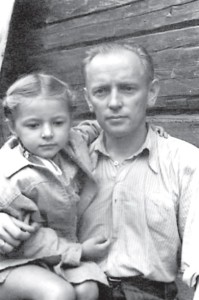
of the Lithuanian Parliament.
Secretly arrested in October, Adolfas and his wife were taken to the KGB prison in Vilnius. There, in the prison basement, he was put through unspeakable torment. After many hours of excruciating torture, he was taken to the prison hospital to be revived. Wording in the prison physician’s report is particularly vivid: “…the patient does not answer questions, is semiconscious, with periodic facial and body extremity spasms. A pulse is barely detectable. The entire body is covered in blood…”
The report also mentions a missing finger, a right eye pierced by a thin wire or nail, genitals partly removed by cutting, and similar gruesome details. A later report, after full consciousness returned, stated that the patient was suffering from “self-induced traumatic shock.”
Ramanauskas endured another year of mental and physical torture before being sentenced to death and executed on November 29, 1957. His burial site is unknown.
His wife Birutė went through as yet undisclosed suffering in the same prison and was sentenced to eight years in the Kemerov hard labor camp. When she returned, she was under constant KGB harassment and intimidation, was not allowed to register for work in her profession, and forced to take the dirtiest backbreaking jobs available. She died in a free and independent Lithuania in 1996.
Adolfas Ramanauskas-Vanagas left a personal account of Lithuania’s partisan movement in his book Daugel krito sūnų (Many Sons have Fallen), which he wrote between 1952 and 1956 while in hiding. He hid portions of the manuscript in various places to prevent discovery by enemy agents with the knowledge it would one day become an important record. This work was assembled and published by his daughter Auksutė in 1991 and republished in 2007. It must be the most comprehensive account of the partisan struggle ever put into print.
His contribution to Lithuania’s fight for freedom is being duly recognized and properly commemorated since independence was restored. In 1998, he was posthumously given the rank of brigadiergeneral. The Order of the Freedom Cross with Swords, 1st and 2nd class, awarded by the partisan command in 1949 and 1950 were officially certified. By presidential decree of 1998, he was also awarded the Order of the Vytis Cross, 2nd class, and the following year, the Order of the Vytis Cross, 1st class. His bust and other memorials appear in several locations around the country, and commemorative exhibits about his life can be seen wherever partisans are honored.
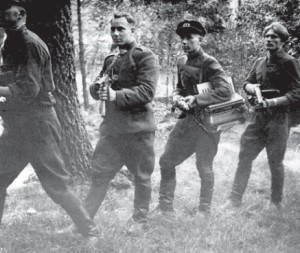
His daughter, Auksutė Ramanauskaitė-Skokauskienė, now serves as a Member of Parliament. Although still a child when her parents were arrested, she knew what it meant to be their child and already understood their need to participate in their homeland’s defense. Her relationship with her father was very close, in spite of the forbidding environment in which they found themselves.—In 2007, she edited and prepared for publication a book commemorating her father titled Generolas Adolfas Ramanauskas-Vanagas tautos ir valstybės atmintyje (General Adolfas Ramanauskas-Vanagas in the country’s national memory). She also authored several other books about him and the partisan movement. In an interview published in the Lithuanian World Community magazine, Pasaulio lietuvis, she gives the following, touching, personal account of her parents’ wedding—a brief moment of happiness in an unhappy world. “Shortly after joining the resistance, through his work in academia, he met Birutė Mažeikaitė, another teacher already active in support of the partisans under the code name Vanda. She was of like mind in the same terms and equal dedication to the cause as Adolfas himself. In October 1945, they were married by another partisan supporter, Zigmas Neciunskas, the priest code named Elytė. Aspects of this wedding made it a most memorable one. No one had seen anything quite like it. For security reasons, it took place in the middle of the night. Attendees, witnesses and guests were all partisans and their supporters. In the parsonage of a small country church, Rev. Neciunskas assembled a time capsule containing best wishes for the newlyweds, their shared chosen path, and their country’s fight for freedom. This time capsule was sealed and buried in the churchyard.”
Years later, his widow and his daughter Auksutė returned to recover the capsule. They were disappointed. The parsonage had changed over the years. The churchyard had been transformed many times: from warehouse to fertilizer storage to tractor shop and no longer bore any resemblance to its former self. The capsule was sealed in a glass vessel, immune to metal detection instruments, but its contents must have still been fresh in his widow’s mind.
 DRAUGAS NEWS Lithuanian World Wide News in English
DRAUGAS NEWS Lithuanian World Wide News in English
